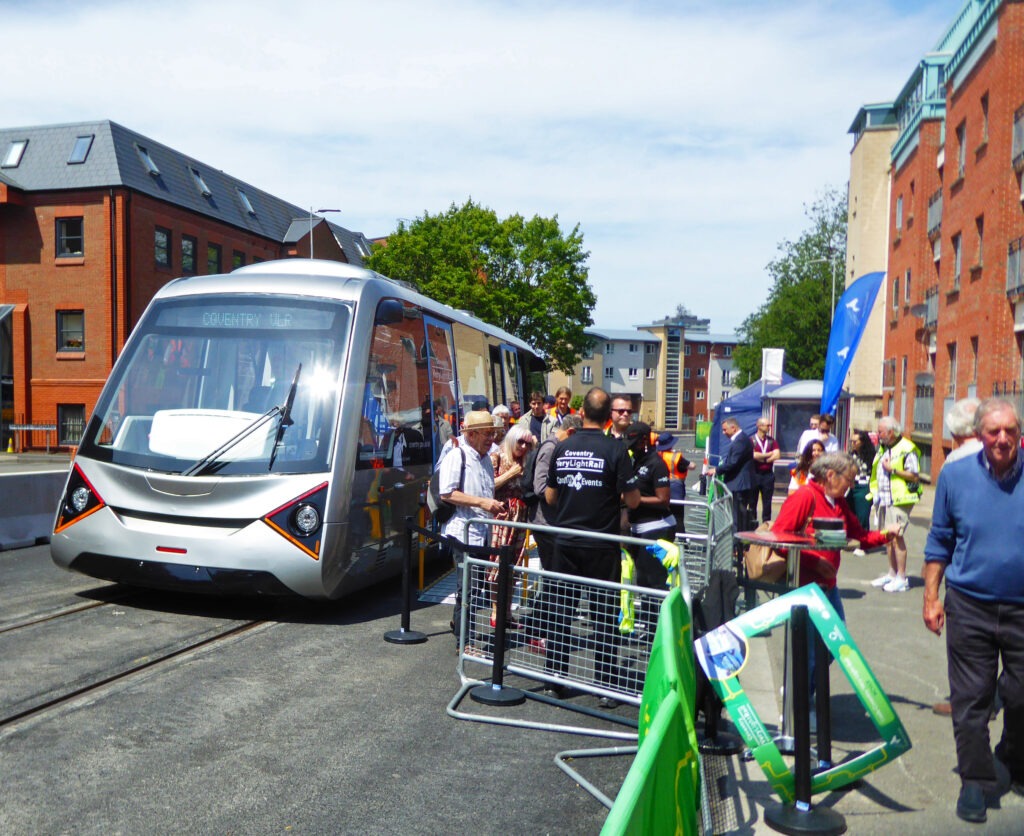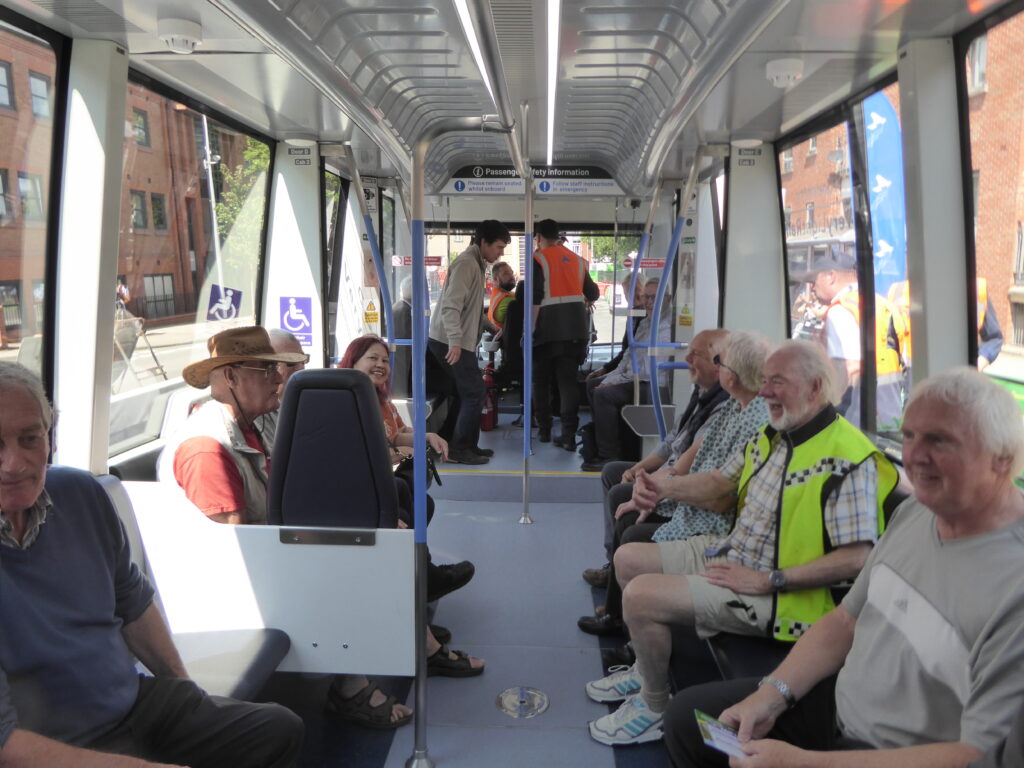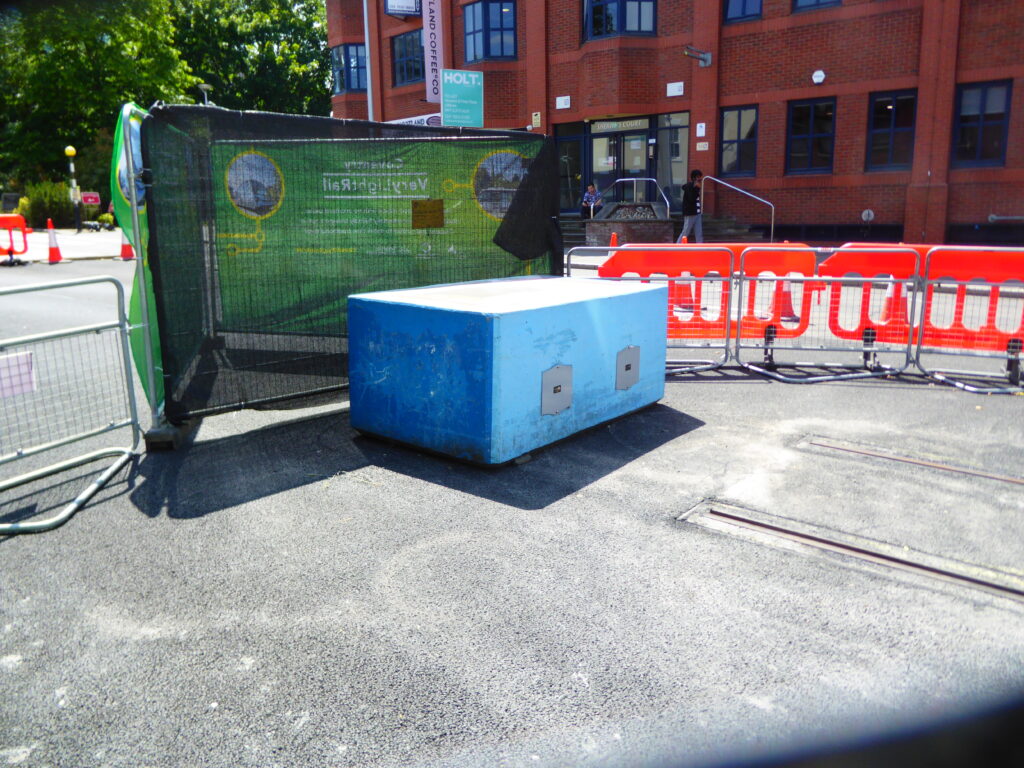
A group of twenty CovSoc members took a journey that they couldn’t have made during the last 85 years! A tram journey in Coventry!
On 13th June, twenty CovSoc members took a ride on the Coventry Very Light Railway demonstration vehicle. Some of us also had the opportunity to drive the tram, but only on the simulator, so no lives were lost.
It’s 85 years since trams were abandoned in Coventry, following the destructive bombing of the city. The ride was possibly the first step in seeing them come back in a modern form.
There is a huge growth in tram schemes across the country and the recent government funding plan encourages this. However, cities like Coventry are too small to justify the cost of a full-sized traditional tram system.
Traditional trams require the complete rebuilding of the infrastructure with demolitions, relocation of services, foundations that are metres deep and over-head wires. The new Coventry system gets round many of these problems and costs.
At the heart of the system is a ground plate that supports the rails. It is made of a special concrete reinforced with steel webbing. It is particularly strong with the weight of the tram supported on a 80mm thick base. This means that it can be installed over the existing services that are laid under most roads.
Part of the purpose of this demonstration project is to confirm that this all works and there are no unforeseen consequences.
The scheme contains a lot of new technology and the council has been working with the two universities and local industries to develop it all and hopefully sell it across the country. The council holds the patents for seven of the new innovations involved.
The scheme is part of regional transport thinking and other parts of the region will benefit from the work as well. The council is working closely with Transport for West Midlands and the programme manager, Nicola Smith, is jointly employed by both.
We were briefed on the plans by the Council’s Director of Innovation, Colin Knight. Colin is an old friend of the Society and shared with us that his grandfather was a tram driver in Coventry.
The test track is 220 metres and includes a tight corner. It took only eight weeks to install and was done to timetable. After the experimental period is completed, the track will be left in place to monitor how it copes in the future. All the instrumentation will remain in place.
The next route for the system will be another test track, this time running along Park Road to the Coventry University Science Park. This route will test the tram on a more normal urban setting that will include points and traffic signals.
The first commercial route will be between the railway station and the investment zone around Baginton Airport, which might become the longed-for Giga Factory.

The experience of the ride was very good. It was surprisingly fast with good acceleration and was very smooth and comfortable. Perhaps most different was the fact that it went around a tight corner without that squeal of metal on metal that is the signature noise of a normal tram. Apparently, this is achieved with the use of a partial differential, that allows each wheel to rotate separately,
The prototype vehicle was built by NP Aerospace in Red Lane, Coventry. It is battery operated with a range of about 70 km. It can be recharged with an overhead recharging system at the terminus of a route. Recharging can be done in just twelve minutes. The absence of overhead power lines is one of the major benefits of this system.
It was explained that there were four separate braking systems. Normal braking is done using a regenerative system that puts power back into the battery. If more braking is needed there is a traditional disk brake system to slow down the wheels. If there is wheel slip there is also a track brake, which operates directly onto the track. There is a fourth backstop system involving calipers. We were amused to see a fifth system in place, presumably required by the Health and Safety team.

In the long term the system lends itself to autonomous operation and this is perhaps the main way of making it financially viable. Coventry is well advanced in regard to the use of autonomous vehicles on our streets.
The Coventry Society supports the CVLR but we feel that a higher priority should be given to connecting the railway station with Pool Meadow and the city centre with the hospital.
